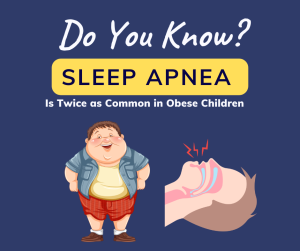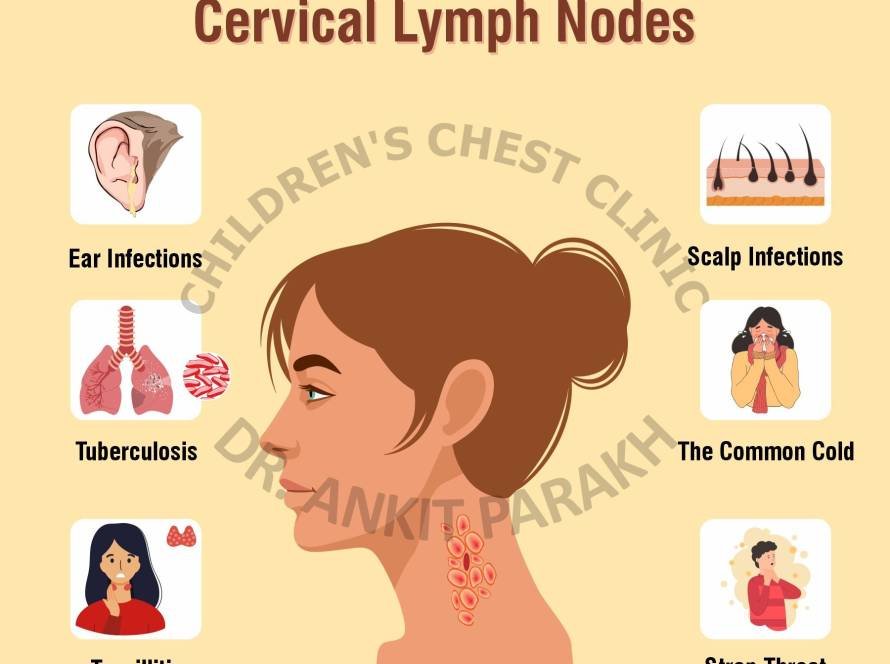The incidence of obesity has been increasing world-over, with the same trend seen in developing countries like India. More children and adolescents are now getting overweight and obese which has got worse after the COVID pandemic. The prevalence of sleep apnea in children is approximately 3-5 %, while in children with obesity the prevalence of sleep apnea could be as high as 40-50%. The relation of obesity and sleep apnea seems to be bidirectional with obesity predisposing to sleep apnea and sleep apnea promoting obesity. In this article we discuss the complex relationship between obesity and sleep disorders in children.

How does obesity cause sleep apnea?
Many scientific theories have been postulated why sleep apnea is so common in children with obesity. The first theory is related to increased fat deposits or “weight-dependant” theory. Children with obesity have increased fat deposits in the upper airways including the tongue and neck tissues which restricts the airflow during sleep. In addition increased fat tissue in the chest wall restricts the movements of the ribs reducing the lung capacity. The second theory is “weight independent” where the changes in the body’s metabolism due to obesity lead to sleep apnea. In obese children there is alteration in the insulin and leptin metabolism which via action on sympathetic activity, inflammation, or other mechanisms increases sleep apnea.
How does sleep apnea promote obesity?
Sleep apnea independently leads to obesity which again worsens sleep apnea. Children with sleep apnea get lethargic and sleepy during the day leading to reduced physical activity promoting weight gain and obesity. In addition children with obesity have a fragmented sleep and repeated episodes of dips in oxygen levels at night. Both of these factors promote cardiometabolic disease and obesity.
What are the symptoms of sleep apnea in obese children?
Sleep apnea should be considered if there is persistent snoring, difficulty in sleeping associated with frequent night awakenings, sleeping in abnormal postures, excessive daytime sleepiness, and poor scholastic performance.
What investigations are required for diagnosis of sleep apnea in children with obesity?
Sleep apnea in children with obesity is complex and requires a proper diagnosis. An overnight sleep study or polygraphy/polysomnography is required for diagnosis of sleep apnea in children. A complete in-lab sleep study records oxygen saturation, heart rate, respiratory air flow, and respiratory effort during sleep. The severity grading of sleep apnea is calculated as the mean number of apneas and hypopneas per hour of sleep (also called as apnea-hypopnea index or AHI).
How is sleep apnea in children with obesity treated?
A stepwise approach is used for treatment of sleep apnea in children with obesity. Children with sleep apnea should be evaluated for presence of enlarged adenoids and tonsils, which might be contributory. Removal of tonsils and adenoid should be considered in case of significant tonsillar and adenoid enlargement. In cases where the adenoids and tonsils are not significantly enlarged or sleep apnea is not completely resolved after the tonsils and adenoids are removed other treatment options need to be considered. These are usually in the form of a continuous positive airway pressure (CPAP) or bi-level positive airway pressure (BPAP) device. Weight management is essential and help from an experienced dietician and child endocrinologist should be sought.
If your child is obese, he/she is at high risk of sleep apnea. You need to consult a pediatric sleep specialist for diagnosis and management.






